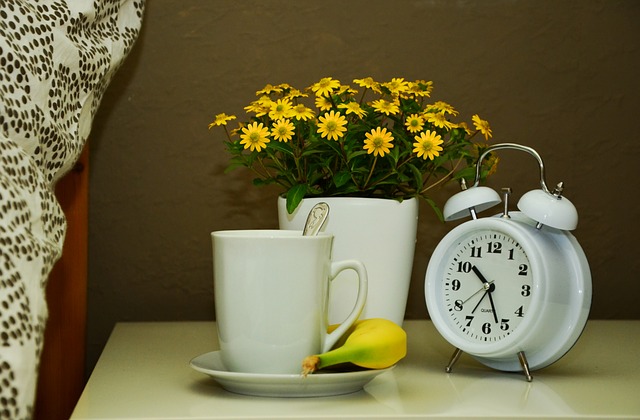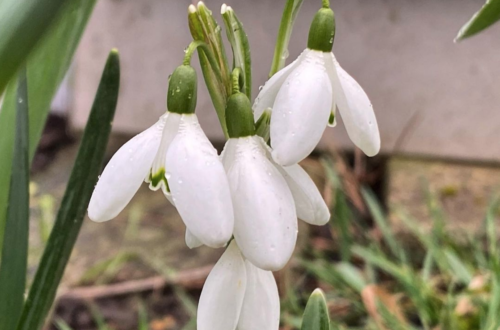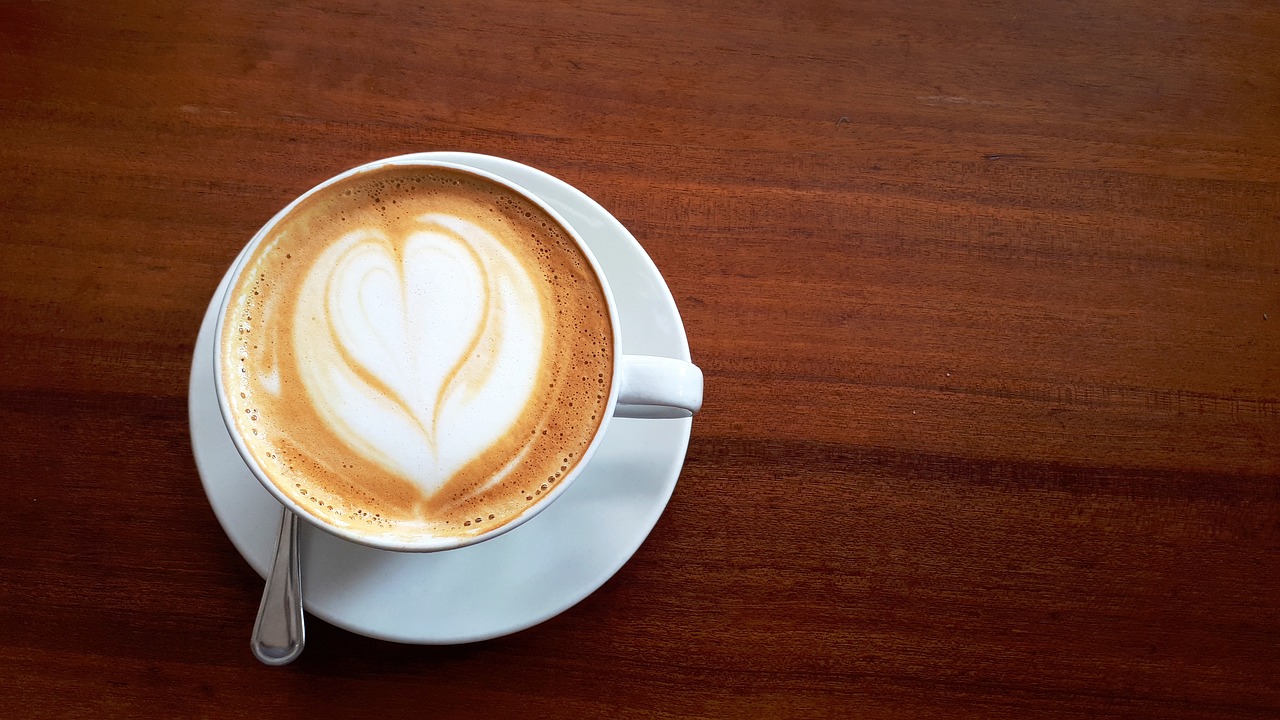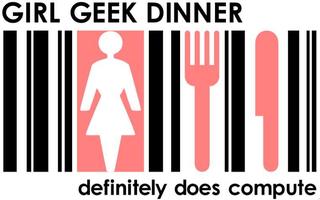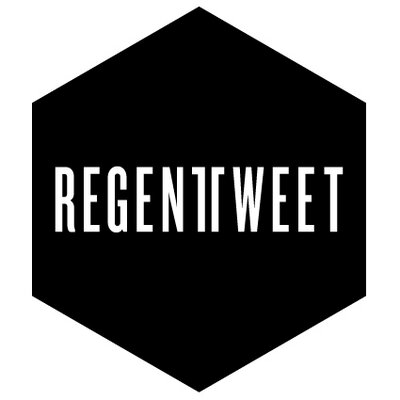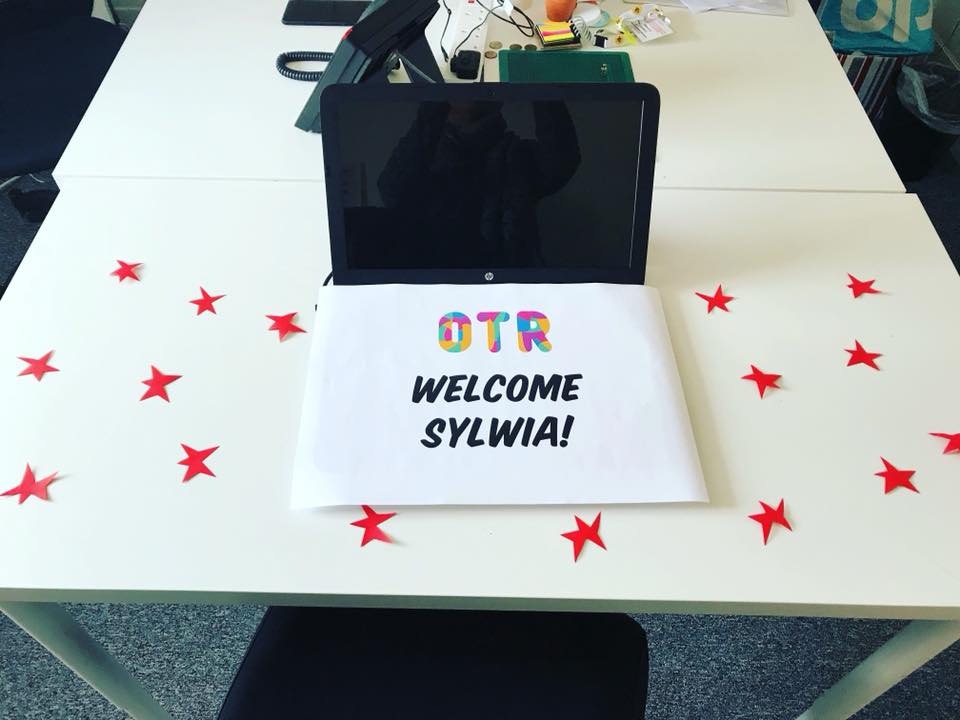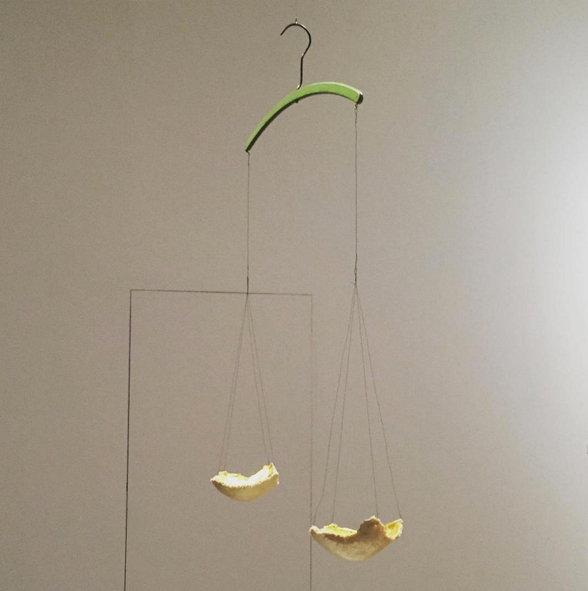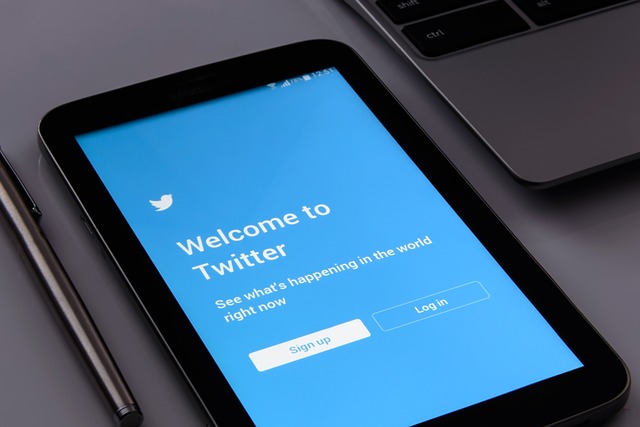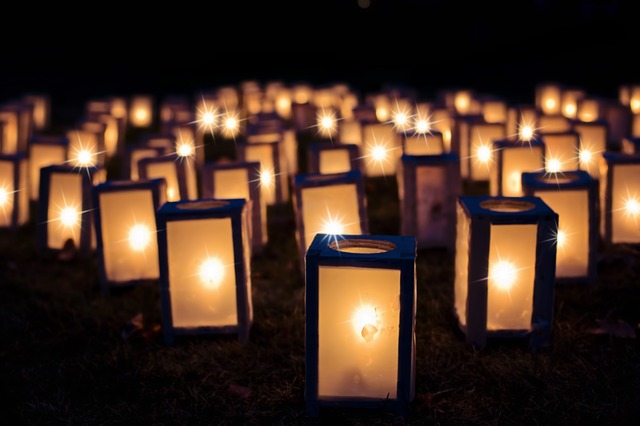-
Google Plus photo walks – inspiration for photographers
This great video write up of Photo Walks organised via Google Plus network pretty much sums up the entire idea. I really like the way Google decided to use this genuine idea originated from within the community to promote their network – smart, gentle and I think it works. Would you agree?
I am bringing my photography closer to my core activities nowadays. I have moved all my photos from an old photoblog to this site. I am also going back to my Nikon. So maybe it’s time to combine my passion for social networking, photography and social change? I should have done it first time I heard of photo walks, but travelling to Nairobi got in a way. Now, it’s time. Who would like to join me?
-
What if you do not even realise that you are not well?
For a start just a few random thoughts:
- It’s really difficult to see or think outside of our own box.
- Sometimes we do not even realise we actually need help because we are not well.
- Very often the right solution is just few steps away but without help we are left in the dark.
You probably think I am talking about creativity, solutions to our everyday problems but actually in this case I am talking about epilepsy. See to me this particular disease belongs to the category of remote, overheard but not really one I was ever exposed to myself, so I very often tend to skip mentionings of it in mainstream media. At least I did until I met Karijn and her NGO based in Nairobi, Kenya. I have posted about their work earlier on but today I would like to share a story of one of their volunteers. This particular one made me realise that stories like this one make us more sensitive to topics we would otherwise simply ignore. So listen to it, I hope it will make you think!
-
The value of Google Plus Hangouts
Last Sunday I had the privilege to take part in a great Google Hangout about…Google Hangouts;) As always, we have talked about many topics but I am posting the entire recording for the sake of those of you who did not take part in hangouts yet.
Just after the end of this recording we have initiated a really interesting discussion about the value of moderation and/or lack of moderation during Google Plus hangouts, but I had to leave, so here are my thoughts.
1. My personal take on the value of Google Hangouts.
I really like the fact that hangouts are not moderated. To me, hangouts are a virtual representation of group dynamics and conversation flow one gets to experience only at barcamps. If you see a session with an interesting to you title you join in (hangouts can be named now), say hi (if not on video, just type it in the chat window) and are more than welcome to make your points. Your attitude and behaviour will define if others stay in touch or not (just like on Twitter, they will be able to follow your updates later, after the hangout). If you need to leave, post a message or simply say bye – others will not take it personally.
I like this notion of a free flow of thoughts combined with respectful attitudes. (less friendly people are muted are banned). But I also like the fact that to participate actively you also need to listen and be patient – give every single attendee time to speak up too. So with ten people in the room, you really have to find the right time to make your points. You are welcome to do so always, but the flow of conversation might mean that your topics will land in chat and might be picked up a bit later. This feeling of slight chaos is actually a good brain exercise;)
2. The value of moderation.
I think Google Plus leave scope for moderated hangouts, but those need to be announced clearly and run properly too. I think many individuals and organisations can engage really openly and proactively with their audiences and later amplify (read: share the content with larger crowds) their recordings. Technically speaking running hangouts on air becomes easier and easier. If you want to use hangouts for more structured events I cannot see why that would be impossible.
3. The value of Google Hangouts for all.
I would like to stress that Google Hangouts are quite universal. Even Google Plus membership is not a big entry barrier for viewers anymore. So why not to try them out and decide what is the best use of this technology. I would just like to remind everyone that there is a great community of people already experienced with the usage of this tool so it’s really worth talking to them first and then taking it to your own grounds. The value of Google hangout is what you make out of it!
-
Blogger interview with Karijn Aussems
Before I post this interview I have to explain you the importance of this particular piece. As some of you might know I was planning to travel to Nairobi, Kenya a year ago (back then I was awarded a reporting trip from European Centre for Journalism) but as I expected my trip ended in Cairo (as my flight was planned for 25th of January, even back then rather obvious time of unrest for Egypt). I have prepared for the trip and got in touch with all the key personalities I was about to interview, and Karijn was one of them. She was extremely friendly even back in 2011 and ultimately helped me through the harder times of my disappointment, stayed in touch and now in 2012 – using the opportunity of Global Voices Summit – we have finally met off-line. The NGO she is running in Kenya, Youth on the Move, supporting people suffering from epilepsy, does great work and I am really happy to be in touch with them. I am also really, really privileged that Karijn has found a day to come up to the capitol for a cup of capa (“medicine”) tea and over early dinner explained some of the highlights of their current work. (She has also told me a lot about the reality of life for locals and expats in Nairobi nowadays, some of which requires more insights and another post, I gather). And later, once I was back in the UK and had time to re-think everything I have learned in Nairobi, she still had time to respond to my questions!
Below you will find the interview I did with Karijn over e-mail, but I would like to point out that I was so moved by her passion and commitment that I have decided to contribute at least a little bit to their work and donate something their team needs at the moment – a flip cam, my old one. Maybe it’s old but I think it is in a good state to serve Kenyan youth on their journey – what a great way for a blogger to empower other voices. And if you want to join me, you can simply get in touch and offer your old flip cam too. I will be sending mine to Karijn parents in August so she can safely take it to Nairobi with her. All donated cameras will be featured on-line and you will see the work done with the help of those simple but amazing devices;)
***
Sylwia: Karijn, when we met in Nairobi this month you told me a lot about the event you have recently organised in Kenya – can you tell me more about it?
Karijn: There are two international organizations for persons with epilepsy: International League Against Epilepsy and the International Bureau for Epilepsy. They organize congresses on epilepsy internationally, to bring information about the latest developments in epilepsy care to the health providers. This year they organized the 1st African Epilepsy Congress in Nairobi. Our youth with epilepsy were requested to launch the congress with their performance. The minister of Medical Services was invited for the launch and gave his speech. He watched the youth perform and stated in his speech that more activities like ours need to take place to give them equal opportunities in society. For three days professionals gave presentations and workshops were held. It was an impressive event, as it brought the minds of people in epilepsy care in Africa together to develop ideas how to bridge the enormous treatment gap in epilepsy care (80% in Kenya, KEMRI-Kilifi, 2012)
Sylwia: How did the event affect the everyday work of your organisation?
Karijn: We were very active in helping to organize the event. The youths practised the dance for various days, and we assisted in mobilizing the media. It had a great impact; we were interviewed for various television stations and papers, which also helped to pass over the message on epilepsy to the community directly. The youths were also asked to help as hosts at the congress, so they were very much involved in the process. Our other activities still continued: our Movers Cyber was still running (to earn income for our awareness creation) and the clinics where the youth give coaching to the clients also continued operating. So it was a very busy time.
Epilepsy Congress on Facebook
Epilepsy Congress can be found on Facebook here.
Sylwia: What are your personal learnings from this event?
Karijn: That we must unite with all stakeholders in epilepsy care to improve: Awareness, Access, Availability and Affordability of the epilepsy care to reduce the treatment gap.
The more we unite, the more we can achieve with the same means. They also agreed on what we always campaign for: the importance of awareness creation on epilepsy, as the epilepsy care offered by the government, is not of use as long as people do not acknowledge and accept the existence of epilepsy.
Sylwia: Do you feel that your organisation will benefit directly from a specific support of event attendees or more from the exposure the event provided to your work?
Karijn: The congress was both very good to inspire our colleagues with the information provided at the congress. The latest developments in epilepsy care were shared and gave new insights. Secondly, the congress helped us to get more attention from the media and maybe more important; from the international policymakers in epilepsy care. We could give our feedback on the international strategies and how we think it can be improved. We mentioned that we need more responsiveness to the needs and expectations of people with epilepsy in the community. Too often it’s doctors and policymakers deciding what has to be changed in epilepsy care, not knowing what the ideas of the people with epilepsy are. According to WHO’s Health Systems Report (2000), the health system has three objectives: 1. better health, 2. responsiveness to the needs and expectations of the patient 3. fair financial contribution. Objective two is often not enough paid attention to. Therefore I used my chance as a presenter to share with them the rights of people with epilepsy, to be involved in policy design (CRPD and the Kenyan Constitution). We hope that this will inspire the policymakers to invite people with epilepsy more often to be part of the process in the policy design.
People with epilepsy shouldn’t only meet with policymakers to listen and learn from them, they must be embraced as equal stakeholders in epilepsy care and their ideas must be taken seriously and implemented where achievable.
Sylwia: How do you use social media and the Internet to promote the work of your organisation?
Karijn: We use social media in various ways. The most active social media is Facebook. We have people from all over the world following our FB page Youth on the Move. People leave their comments and questions and people even send us mail to share their personal challenges and ask us personal advice how to live beyond epilepsy. Sometimes people from the US and other continents even say that their doctor failed to give them the information they needed to know how to overcome the challenges surrounding epilepsy. Doctors are often very busy and therefore may lack time to also guide their patients how to avoid triggers of seizures and how to live an active life. Through the social media we share the knowledge and experiences so that we bridge that gap that they experience when they go to the doctor. We also use social media to stimulate youth with epilepsy to develop their own opinion. We challenge them with statements and invite them to be part of the debates. The social media gives youth with epilepsy a face. They’re not anymore the patient alone. They are the people with wonderful personalities, inspiring ideas and experiences that they share online. They are connected with people with epilepsy or working in epilepsy care from all over the world. They assist in changing the mindset that epilepsy makes one disabled. They show that with epilepsy you can live a very active life. We post pictures of their activities, such as yoga, theatre, dance, music and picnic, and makes people enthusiastic to be part of the team. This year we even had guests from the US who found out about us through Facebook. They really wanted to meet with the youths and share experiences. It was an incredible event, not only the youths from Kenya feel empowered, but also our guests.
Sylwia: So what’s next for your organisation?
Karijn: Our hope is that we can give an international voice to more youths with epilepsy, especially the ones who live interior and who do not have access to internet. We are looking for opportunities to get flip cams so that we can easily give a voice to the youth with epilepsy through social media. Their voice is as important as the voice of the youth with epilepsy who have access to Internet, as the voice of the international policymakers. As mentioned earlier, youth with epilepsy have the right to be involved in policy development. As long as they are not invited as stakeholders in the policy design we need to remind the policymakers of their existence, and we need to bring their opinions and ideas to them. I think of policymakers of the Ministry of Youth, the Ministry of Health, but also the Ministry of Labor. What should these ministries do to make life for youth with epilepsy as bearable as for any other person? With the help of flip cams, we want to bring youth with epilepsy in contact with them. We want them to speak their mind in front of the camera, and share their opinion with the policymakers with the help of social media such as Facebook en Youtube. The challenge is that we cannot find flip cams, while they look amazing. It looks like a small cheap phone (which will not attract thieves) and can easily be taken to all places in Kenya to ask youth with epilepsy to share their opinion. We therefore hope that we can find people who could donate these to us. It would give a voice to the youth with epilepsy.
Sylwia: Do you happen to have video recordings or photos from the congress?
Karijn: Hi Sylwia, it would have been nice if we had our flip cam by then. We do not have shootings, except for a shooting made afterwards where Moses explains what he thought of the congress. Unfortunately, it’s a bit noisy on the background There’s also a video we made of our youths during the picnic. They’re dancing and singing their song Ahead Together. My colleague is changing the format and sends it to my mail. Once it’s done I will forward it to you.
Sylwia: This is all brilliant! Thank you for all your time!
-
Blogger interview with Vuk Višnjić and Danica Radisic


Photo by @rezwan
I have met Danica in Nairobi at Global Voices Summit. She is working on Serbian part of Lingua project and took part in our open session on Kids in Tech. She is also a mum of a talented and inspiring geek, who decided to change the world with the use of tech. Today I have the opportunity to talk to her and her 12-year-old son, Vuk.
Sylwia: Danica, when did Vuk start getting involved in tech? Was he always drawn to the Internet? As his mum how do you remember his first experiences with the web and later blogging?
Danica: Vuk was, almost literally, born behind a computer. While I was pregnant with him, I became very active online and even started my first website back then. As I was young and looking for more income, I freelanced as a translator and researcher, thus mostly using the computer and a dial-up Internet connection for work. I was also a full-time parent, so as soon as he was old enough to sit up, he was in my lap, watching me work. By the time he was 2 and a half, he knew how to turn on the PC by himself and double-click on his favourite desktop game to start it.
I don’t really recall his first experiences in a step-by-step process. There was no step-by-step process. I suppose one thing led to another from there. At our home computers and the Internet are used for communicating with loved ones (most of my friends and family live abroad) and work. It’s a habit, so I suppose he just made the habit his own. Most of the time he spent on the Internet was useful and creative, so I just let him run with it while teaching him the basics of online safety and computer maintenance. In fact, by the time he was 10, he was explaining the concept of the online world. Here’s a Facebook note about one of those situations that I posted back in 2009.
I really value his opinion and that of his generation when it comes to Internet usage and practices. They are digital natives of course. We may know quite a bit, but most adults are immigrants in that world, still waiting for citizenship approval.Sylwia: Vuk, how do you remember your fist experiences of the web, the Internet? What devices did you use to access the web for the first time?
Vuk: I can’t really remember the first time, but I know I used a computer. I know I was playing games and learning stuff on the web. I know I was very little like 4 or 5 or even younger.
Oh, and I also had these blog with my mom about Varmak. It’s a made up land, I am actually working with a friend on a book about it. (Syl: Now Vuk is blogging over at http://g33k.rs/).
Sylwia: Thank you! Let’s stop at games just for a second. Vuk, did your web skills improve when playing on-line games? Did you use games to dig in and find out more about the word and practice stuff you learned at school?
Vuk: Yes, actually. I played games where I learned about recycling and history, math, English…
Sylwia: Danica, what is your take on this? Did you or school consider using games for education or more for entertainment? If it happened organically – was it done for fun or learning, or both? Did you play together?
Danica: I happen to be a gaming believer. I believe games in general, offline, online, in real life and on computers or consoles, develop specific, much-needed skills for everyone. And they can often help to take your mind off of the troubles of reality, to provide space in the brain for those rare “Eureka” moments. Like with everything else in life, and Vuk’s upbringing, I just don’t like too much of anything. Gaming in moderation is a necessity though.
Our household gaming habits are sporadic and for both fun and learning, you can’t really separate the two. By “sporadic” I mean we choose the activities that are fun and practical at any given time. Sometimes, like when the weather is on the down, we choose Playstation or PC games. Other times, weather and time permitting, we go to the gym together, go swimming or just muck around outside. The world is our playground and there’s no better way to learn than through games.Sylwia: Vuk, what do you think of age limits for games? Do they make sense in choosing games? I know it’s easy to access any type of a game in reality but when I talk to younger kids they tell me that playing on-line games with teenagers, for example, can make the younger ones feel a bit uneasy about bad language used by the older ones. Or some of the content can be upsetting – how do you and your friends choose games to play?
Vuk: Well, I have a different style, everybody likes shooting, I like only some like, The Star Wars the clone wars, but everybody else likes these that are for 15 and 18, and I like some things like Skylanders: Spyro’s Adventure. So, everybody else likes these with blood and bombs and shooting and resealing, and that actually makes them violent in school and out.
Sylwia: Vuk, when you start playing a new game do you check its age limit or not at all?
Vuk: I do, but a lot of them don’t.
Sylwia: Vuk, when did you start blogging and what prompted you to do so?
Vuk: I started blogging when I was 9 or 10, then I stopped and then started again with g33k.rs. When I started with Varmak it was just fun, but with g33k I wanted for people to here me, and that is happening.Sylwia: Danica, do you remember Vuk’s first experiences with blogging? How did you both feel about those?
Danica: One day, used to the fact that I and some of my friends were avid bloggers I suppose, Vuk said he wanted to start his own blog and write about “Varmak”. Varmak is an imaginary world, in which he and his cousins have the lead roles that I came up with when he was about 3 and kept telling him bedtime stories about for years. The basis of the story is a magical kingdom in which he and his cousins guard the tradition and ways of the “old world”. It was my way of teaching him values and, as I gave him the role of “Vuk, Commander of the Knights of the Ancient Order”, a way of empowering him to take command of those values. He wanted to use a blog to share the story of Varmak and those values with others. After just a couple of blog posts, he started getting comments from parents who claimed they were raising Jedis and Ninjas and supported his values. It was fun and encouraging and we met some great kids and parents through that experience. I’ve done my best to teach him the basics of blogging, using WordPress and sticking to a niche and audience. Seems he has a good grasp of it now and is growing as a blogger.
Sylwia: Vuk, What is your best memory related to reactions to your blog? What was the best moment of your blogging so far?
Vuk: Well, it’s probably the first time on g33k, I had a lot of comments and ideas were flowing.
Sylwia: Vuk, do you connect with local readers or readers and other bloggers from all around the world? Who was the most amazing person you met through your blog?
Vuk: Yes, but mostly from my region and I wish I could from rest of the world. The most amazing person I met is Ulrike. She is a German activist and teacher and she works with kids in India. And I think what she does is really cool and I would like to learn from her.
Sylwia: I know Ulrike, I met her in Nairobi recently – she is indeed a great person! I hope you will meet her too! Did you ever consider posting more in English on your blog to reach out to global readers?
Vuk: Yes I did but my Mom said I couldn’t because I don’t have enough audience for it. But I would love it.
Sylwia: Danica, do you think it’s more effective to grow local audience first?
Danica: Yes, I do think it’s more effective to grow a local audience and identity first. Every blogger should devote his or her time to their home turf, learn and contribute as much as they can, and then hopefully grow further.
Sylwia: Vuk, tell me more about your recent Prezi presentation. What inspired you to write it?
Vuk: Well, I was invited to do some presentation. And I got the info that most of them are into media, so I thought to do something about what I’m doing now. So I did it with activism and the Internet and how to find a good cause and support it. My mom gave me few ideas, too.
Sylwia: How did you start getting interested in nonprofit and fundraising with the help of the Internet? What are your plans? Do you have a specific cause?
Vuk: Well first I wanted an offline NGO, so I could help kids and change the world. But then I met the Internet a little bit better, and I came to the conclusion that I could communicate and share with other people. My plans are that I am going to India and I am going to teach kids, and from there I’ll see how it goes. Not really. I have so many causes, but not specific, but if I had to choose one, it would be: Animals.
Sylwia: Vuk, from your presentation I understand that in your opinion the Internet is a great source of ideas for good causes and knowledge about them. Do you think the web is also useful in actual fundraising or campaigning for a cause?
Vuk: In some countries less and in some more. That’s because online petitions can be part of these, but in some countries, like mine, they are not accepted.
Sylwia: So in your country how can you make the most of the web for fundraising and activism?
Vuk: There aren’t many examples in my country because all of these are just starting. Probably by tweet-ups and Facebook groups and Facebook events.
Sylwia: Speaking of which – you are planning an event for today, right? Tell me more about it!
Vuk: Right. It is a tweet-up where the money will be raised for kids from foster families in Milosevac and for the foster home. Milosevac is a village in Serbia where there is an 80-years-old tradition, where every married couple has their own children and foster children. There not really adopted, and they belong to the Republic of Serbia and to the home. And they don’t do it for money, ’cause for every kid, they get 6-7 thousandth dinars per month, and that’s not a lot for a kid, that’s like 2 watches and a ring. And the Serbia doesn’t really give support, so my mom and I want to do this every month.
Sylwia: Vuk, I wish you good luck with today’s event! Danica, how did you both come up with this idea? How are you planning to raise money at the event?
Danica: Vuk and I have both attended tweetups quite often here and these kinds of gatherings are now pretty much a regular instalment in the online community’s social calendars. Most tweetups here are purely social, many are commercial and only a few have been humanitarian, so we’ve seen what Twitter and tweetups can accomplish. This past Saturday, Vuk and I were spending time together downtown, as usual, and while we were having a casual dinner in one of Belgrade’s most popular city parks, an elderly gentleman approached us, selling greeting cards to raise funds for foster families in Milosevac. As I’ve heard about Milosevac, also known and the Children’s Village here, we began talking more while Vuk picked out a few greeting cards for us to buy. Then Vuk turned to me and asked if we could do more. He said giving 500 Dinars (less than 5€) just didn’t seem like much. I agreed and asked what he wanted to do about it, although, to be honest, I knew his answer before he said it – a TweetUp at Mamma’s Biscuit House, our favourite coffee and cake shop, just some 500 meters away from where we were at the time. So we agreed with the elderly gentleman that he and a few representatives from their NGO would be there to collect funds, agreed on the date and time, exchanged numbers and went down to Mamma’s Biscuit House where Vuk talked to the manager about using their venue for the fundraiser and convinced him to donate 10% of the bill that evening to the charity in question *if* Vuk got enough people there. So he got home and got to work – first blogged about it, then distributed it on Twitter and Facebook, then sent private messages and emails to rally people that he knows from the online community to support his cause. He’s been very dedicated to it for the past 4 days and over that short time period and using jus the resources he already has available, it seems he’ll be getting at least 50 people there, including a couple of mainstream media journalists. More than enough people and hopefully plenty of funds raised for a cause he supports.
Sylwia: Vuk and Danica: I am really privileged to have the opportunity to know you and I wish you both amazing success tonight! Thank you for the interview and your time!
You can follow Vuk on Twitter here and Danica here.
-
Time to give up or time to work harder? – on choices and GV Summit 2012
It took me about a week to re-think how to write up the Global Voices Summit 2012 hosted in Nairobi last week and I think I managed to sum it up in my head today during my long Skype chat with GV Polska team. Since I got back from Nairobi I was in a bit of a funny state – you know that feeling when something, a realisation is growing in your heart and needs time to articulate itself clearly? And then suddenly hits you – under the shower or in a different, equally ordinary moment? Well, I do not think I had a real eureka moment tonight, but I did manage to find the crystallized product of my choices, conversations, feelings and considerations from last days…in three pages of development ideas for GV Polska.
But I am starting from the end! I was not sure if I am going to go to the Summit this year until almost a last minute and I knew that if I were to go it would probably be my last one. Partially as a result of my personal circumstances but mostly due to a series of small, but crucial circumstances within Global Voices, I was considering not only leaving my position of GV Polska editor but leaving the entire project. To sum them all up I felt that something has changed, it’s not there anymore and probably is gone forever. Something I used to call the spirit of the community but actually now, after a series of conversations with my close friends from various GV projects, a chat with one of the community leaders and the 5 intense days of the Summit I realised it’s not it. It’s the change I was not prepared for! The change related to growth. Not the lack of willingness to bring in new people, on the contrary – the fact that every new person brings in something new and changes the entire landscape of this voluntary group, work place, movement and community. The fragmentation of the community which results in silos and quiet places that if you do not have the power to fill up might ultimately feel just too empty. It results in the lack of time to address issues important for some and the danger of silence on occasions when a stand needs to be taken. No, I was not prepared for this change. And so much has changed since 2010! Back then we did not even dare to refer to GV as “community”! GV is changing and I was not sure if I am ready for this change.
Global Voices also changes its members. We meet and connect with exceptional individuals. We take an active part in sharing their stories. Their stories and their presence change the way we look at life. If anything they drag us outside of our comfy little boxes and make us think! As paradoxical as it sounds it was those small signs within the community that made me realise a new problem our community is facing – on our own GV Polska level but gradually on the global level too. The inclusive, democratic and supportive nature of our group(s) creates a culture of polite and quiet approval of our faults too. We find it really hard to flag up issues! It occurred to me during the last few weeks when some major faux-pas happened (due to the lack of time, I am certain) and where or ignored or flagged up too late (I say faux-pas as luckily in a voluntary work there is not much scope for actual damage and we are way too sensible for that). And then one day in our Polish team we had an email stating that a volunteer dislikes the corrections made to her translations – and I must admit I was happy to see this message. It proves the maturity of the group, bravery of the author and most of all – the fact we have a problem which needs to be addressed. It also made me think about the silence. We have a large group of volunteers – not all of them active, recently few leaving the group, more of them talking about planning to do so. We have a huge amount of group members who hardly ever speak up. At the Summit we have talked a lot about the sustainability of the site, increase in volume and quality of our content, recruitment. We have looked at the grey areas of our structure, the quiet corners in its basis. That made me realise that it is probably the time to address those people pro-actively, give them a voice.
I will not go down the route of trying to find an ultimate definition of what GV voice is and whether we should take a stand or not (it means something else to each of us) but when it comes to benefits and values of the community I question the focus on the goals of GV content only. I think it’s important to remember that we are here to deliver stories of under-represented voices and regions and counterbalance the mainstream media. I think it is equally important to embrace the growth of the community and prepare for any change coming with it. The mainstream media starts to realise the value of citizen driven content. Increasingly some of the main stream news outlets start to reinvent their models and embrace the fact that it is the public, not the media giants, defining the importance of a particular piece of news. Stories are brought out to the global view more easily thanks to the Internet penetration, Google translation and many other developments. The original goal of Global Voices might not be necessary so relevant in few years time but the historical growth and network value of the platform and its community will remain pretty strong. That is if we ensure that we treasure it’s building blocks – inclusiveness, openness to new ideas, tolerance and respect, trust and friendship.
I think that the real voice of GV is actually an amazing combination of all our relationships within the community and outside of it. I felt it strongly during my presence at the Summit, but then again I was one of more than a hundred Polish volunteers and they did not have the opportunity to experience that feeling. I did not want to actively contribute all the time due to my personal doubts, but since I was invited I felt obligated to represent my team and make the most of the time to then take back the learnings and observations and make the most of them for our team, as well as report and give back to the global community. That realisation led to a strong understanding of what GV really is about – people. I spent hours talking to my closest friends within the community about its value, their personal motivations, approach and problems. Once again I came to the conclusion that this “place” is all about people and their stories – in any sense. I chatted to the event guests, external observers who have also noticed a change in the community – and yet again: I had to conclude that what we have here is priceless because it’s built on a long term voluntary work and a similar approach not to life, but to what Global Voices is all about!
So my conclusions to this Summit? Let’s practice what we preach. Let’s continue writing – more and more and more. Let’s bring in more and more volunteers. Let’s improve the quality of our work, but also on the value of our community. Let’s not try to define it, but live it fully and ensure every single member of our community “feels it”. Let’s be transparent if we talk about transparency. Let’s be secure if we educate bloggers how to stay safe. Let’s give voice to the most silent members of our community and truly reverse the pyramid of our organisation. I am extremely fortunate to have had the opportunity to attend this meeting and address my personal doubts and understand GV yet again a little bit better, at least I hope so. I had a hard choice to make – leave it as it is (to me) or change it. Inspired and supported by a few wonderful people and the overall voice of the community I have decided to stay and use the initial reasons of my doubts to at least try to change few things – hopefully, to make this place even better. We have now a list of 11 major points to address and the list will be growing, I am sure of that. All of them aim to increase our transparency, volume and quality of content but also listening to all of our community members and empowering each of them to speak up, write, take a stand – on many levels. Ultimately to take a more active role in the way Global Voices is growing and achieving its goals.
I am really really privileged to start this next chapter with people who were there for me all the time and people I would like to thank for their support but also painful honesty!Ulrike Reinhard asked me about “we” in the age of Internet. I think as I said in the video above, Internet has changed the world around us a lot but ultimately we are coming back to where it all has started – the need to connect with similarly minded people and build long term, trusted relationships with them. The tech and web landscapes will change but people will stay people. In the times of the Internet “we” becomes the most crucial concept ever: you, me and everyone else involved.
-
Practicing what we preach – Regent Tweet
Regent Tweet is a series of experiential events run to promote high street retailers. It is aimed at women influencers – which in the light of current Le Web event is a pretty interesting notion to me. What stands for true influence? How do we measure it? In this case, I was invited to take part in Regent Tweet as a member of Girl Geek Dinners so we are assuming that lady geeks are influential. I think there is a grain of truth in that statement, but we will see the results of the campaign next week. In the meantime here is the site. Enjoy it -if you attending- and follow it under #regenttweet tomorrow.
-
Le Web London Day 2
I have spent the second day of Le Web in Plenary 2 listening to case studies of social media implementation mainly. I have joined Plenary 1 sessions in the afternoon and looked at the expo areas too. There is so much to take in! I will need to sleep on it all before it all sinks in. I think the event was really well organised, the sessions were extremely informative and – as always – the off-line networking very valuable. I think I have benefited the most from discussions around particular topics (Klout – on-line reputation, kids in tech, social nonprofits etc), probably a bit more than from sessions. I think LeWeb brings together people who sooner or later will affect the way we experience the web and improve our work and lives so it is not an expensive conference, one of many, but the one to watch!
-
Le Web London Day 1
Le Web is in London now – today and tomorrow. The first day was very exciting and if you want to see the full write up of all major session, please check One Man Blog. I would like to share my personal insights:
1. The event itself – I am impressed with the organisation, design, food, expo – all areas and aspects of the event. I think it is really well prepared! Good work to @loic and his wife, @geraldine!
2. I am really happy that the event gave me the opportunity to network with very interesting people I happen to know online. You will see me talking to them on Twitter today.
3. I like to put a face to a brand so I am really impressed to hear from Instagram, Jamie Oliver, Google (great intro to Google+ and its background and future), CQ Spark, Radian6, Cadbury’s. I am truly unimpressed with Klout.
4. I am really happy that wifi – considering a number of attendees – was fairly stable. I was however really disappointed with Storify, mainly their iPad app (no way to take notes, it’s not stable enough).
I was taking it easy today and listened more than taking notes, but you will find most of the points I took today in my tweets below (I will evaluate on those in my future posts in more detail). More to come tomorrow!;)
-
#NeverSeconds day on Twitter – 9 year old blogger and Twitteratti
It’s quite amazing to see so much happening around VEG’s blog in one day (my collection of links and tweets here)! Just yesterday the story of 9 year old blogger banned from taking photos of her school dinners (the major topic of her blog) appeared on WIRED website and we can already celebrate a happy turn of events – Martha is not only allowed to create her favourite content again, but her story has generated quite an impressive sum for the charity she is supporting with her writing.
Some of us have lived the story since few hours, others since yesterday, but we have all expressed our opinions on the topic on Twitter. I would just like to sum up few major points I consider crucial:
1. Network effect
The true power of social networks lies in complexity of relationships. Just because we talk about coffee or post photos of our snacks on Instagram does not mean that our relationships are mundane because when a crisis occurs we have the ability to reach out and flag up stories worth attention to the right people. If we care for the cause that is! To me personally Martha’s story resonated on two levels: freedom of speech and the quality of kids food at school.
Response does not come suddenly and it is also unfair to lead it back just to my tweets, but it does occur. And the more people share the news, the larger its reach. Story starts trending. Media picks it up. Someone finally starts the investigation. Others organise ways to resolve this problem, suggest options for parties involved. But most of all – more and more on-line profiles (regardless of the social media tool) are involved.
Without the network effect stories of “normal” people would not stand a chance in the traditional process of mass media sharing. Why? Because gradually the major media organisations start to realise the value of listening to their audiences, not only educating them on what facts are important at the moment. We are living interesting times when the power of news sharing shifts from mass media to the public. It is the public interest that pre-defined the value of a story.
2. Taking stand vs sharing a story
It was really, really interesting today to see various responses from people I happen to be in touch on-line or people I know better from off-line interactions. Some jumped on the hashtag and took active part in promoting the cause, expressing their personal stand on the matter. Others carefully shared the news avoiding any “drastic” opinions or even mentioning Martha’s problem with local authorities. Some of my friends called me and looked for solutions, others put the topic aside for the evening blogging.
I personally think that our networks and reputation provide us with a great opportunity to support the cause so if the topic is something we believe in we should express our opinion and do our best to help drive the change, not just watch it. There are many ways to do it – I decided to post on UK Fundraising and work on Twitter (most feasible solution during working hours) because that is where my most valuable and relevant readers are. Later I looked at signing petition and working our alternative solutions to continue Martha’s idea (chatting to @ClaireAtWaves and setting up Pinterest account for kinds to share their photos). So thank you to those of you who joined in today – I am privileged to know you!
3. The power of personal relationships
It was really good to experience once again the true value of on-line connections and valuable personal relationships I have with some of you. It was really good to see that you understand why this particular story was something I feel strongly about. It was almost natural to sit down and talk to some of you – we all knew THIS is important and needs to be addressed now.
4. Social media landscape and other media
I was amazed how slow Martha’s local council was and how fast the social and other media managed to point out the mistakes made by their officials and Martha’s school. By lunchtime, early afternoon, Martha was allowed to take photos of her school meals again and those of us who worked on alternative solutions suddenly realised – oh, so it’s ok now! In the meantime though the traditional media provided us with the second wave of storm around the story – major news outlets posted about the trending #neverseconds, BBC got in touch with Martha’s family, school, council. I went to the post office just to hear on the news the very same story. You see, social media does allow us to share and amplify stories almost immediately. So if those stories are relevant to few major areas of our life (kids, school meals, freedom of speech, local authorities etc) it’s expected that the story will spread and gain supporters quite fast. I am particularly happy to see how fast the media joined those discussions though – really well done!
5. Kids on-line
Eh…I really do not know if I need to repeat this again. Kids are on-line and should have the right to express their opinions, we just need to ensure that they have safe environment to do so and understand the consequences of their on-line activities. Blogging is really an old thing! I had conversations with 9 years olds about data ownership, parents not respecting the age limits of games and problems with reporting cyber-bullying. More importantly – kids are authentic and honest, so I think this is why we tend to admire the content they create. Not really wrapped in any cultural or professional slang, open and pretty creative on-line discussions should be taken just as seriously as the content created by adults. Why not? Why do we assume the right to look down at our own kids under the cheap excuse of protection? It really does not make sense to me, specially in cases where we all know that a child IS right and might initiate change on a larger scale.
6. Fundraising element
I notice quite often the notion of control in organisations dealing with individuals or groups fundraising on their behalf or around their products and services. And I am really shocked when I hear that those fundraising activities are often stopped! If you see a person raising money for your charity or through conversations around your service the last thing you should do is ban their activities or take down their accounts!
I am slowly starting to realise this myth of control but very often I get really angry to see this basic lack of common sense. Again to simplify: this kid is talented, creative and writes to raise money for a charity not to criticise local authorities or kick off a media storm around school meals. Is that really so difficult to grasp?
7. Silence of the authorities
…and the core of the problem! Again and again, we see individuals, brands and organisations functioning on the margin of social conversations. Sometimes they are present in social platforms to share information and to promote themselves but very rarely do they LISTEN and RESPOND. I know, you have heard it so many times:) So what happened today was an interesting wave of misunderstandings and moments of sudden realisations.
“We need to stop this”
“We will make a statement to justify our take and blame “bad” Martha for lack of objectivity” (here I would like to point out that for an old fashioned blogger this is purely an insult – blogs are supposed to express opinions!)
“Oh, media is talking about us, we have to fix it”
“We apologise but point out that we were only a little big wrong”
All this in one tweet while the UK Twittersphere is trembling? Not good at all. So to sum it all up I think we have experienced that feeling of fresh breeze of change, but there is still a lot of work to be done. Organisations need to embrace social networks. School meals – well, probably need reviewing, but that’s a complex issue too. Kids need to have space and support to develop and grow! We all need to learn to take a stand. I am glad few of us did.




